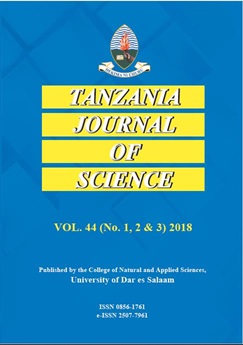Molecular Epidemiology of Antibiotic Resistance among Escherichia coli Isolated from Broiler Chickens Sold at Selected Markets in Dar es Salaam, Tanzania
Abstract
Unwarranted and improper uses of antibiotics in broiler farms contribute to the challenge of antibiotic resistance, making even previously treatable infections, difficult to treat. We conducted a cross sectional study from November 2021 to May 2022 from broiler chicken markets in four districts of Dar es Salaam to determine the extent of antibiotic resistance among E. coli isolates from broiler chickens. A total of 160 E. coli isolates recovered from cloacal swabs were identified by culture and biochemical tests and confirmed by Polymerase Chain Reaction (PCR) assays. Antimicrobial susceptibility testing, targeting seven classes of antibiotics, was performed by disk diffusion method and eleven representative antimicrobial resistance markers corresponding to each antibiotic class were screened by PCR. The highest resistance was found against trimethoprim (75%) and erythromycin (74.37%), while the most common resistance gene was dfrA1 (74.37%) and blaTEM(73.75%). The study also found a high prevalence of multidrug-resistant isolates (84.4%) from at least three antibiotic classes. The results highlight the significant contribution of poultry farming to the spread of antibiotic resistance, with potential consequences for both farmers and human health. Prompt measures are necessary to protect human and animal health.
Keywords: Antimicrobial resistance markers; Escherichia coli; Broiler chicken; Dar es Salaam; Tanzania.


